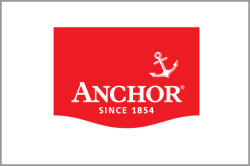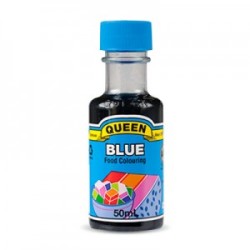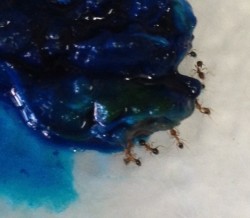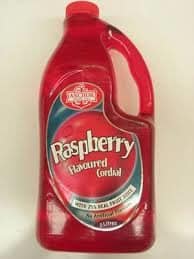This red cordial tale about two beetles is not about John and Paul, nor even Ringo or George. My beetles are not “The Beatles.”
How I love Google! Let me make that clear at the outset. In the last week of July 2013, a chance Facebook conversation between parents took me on a wild journey. It was about the best way to treat gastro with natural remedies, with mention made of raspberry red cordial.
That immediately sparked my memory – Robbie and I always took a small bottle of raspberry red cordial with us when we went to Bali – on the specific advice of our GP, Dr. Zeke Pervan. The first time was about twenty years ago and we did it every time we went. We were careful with our food and drink, we never suffered Bali Belly and always came home with the cordial bottle empty.

Enter Google. Aha! Of course, it was Anchor!
Facebook discussions about red cordial and gastro
Armed with this information, I posted a link in the Facebook conversation and decided to read a bit more about the efficacy of raspberry red cordial in cases of gastroenteritis. With good cause.
In the previous few weeks, My Mum suffered very badly for nearly two weeks. I caught it from her and passed it on to my Dad. In varying degrees, all three of us were laid low with gastro, and none of us thought to use “raspberry red cordial” at the time. However, we have to ask “do the raspberries really knock out the gastro bugs?”
Not so! What I found led me to post another comment on the discussion – which simply said “But maybe it’s the red colouring that makes the difference??? I can feel a Nana Story coming on”

Debate still rages around whether “red cordial” sets children off into bouts of hyperactivity. Are we to avoid it at all costs? I spent several hours researching the differences between E120 and E124 – both used as red colouring agents for food.
Is the red for the cordial purely natural, or synthetic?
One red colouring (E120) is purely natural, being made only from the Cochineal beetle insect. Vegans and Muslims ban it because it has an animal source. Albeit, it being nothing more than the juice of a squashed scale insect.
The other red colouring (E124) is a coal tar synthetic, made purely from tar based chemicals, and acceptable to vegans and Muslims. It is this red ingredient which has the reputation as being very bad for kids with ADHD and similar complaints.
With E120 caught up in the “ban all red food additives” whirlwind, many kids suffer gastro unnecessarily when a bit of red cordial will fix it. Well, it did in the past.
Finding the right red cordial – in the early 1800’s.
Slaving away into the early hours of the morning, and emailing myself, I sent over 170 links from Google for further research. In the early 1800’s in Van Diemen’s Land (now Tasmania), cochineal was a fail safe way to treat diarrhea. It was also an external application for piles.
Of course, by now I was hooked. I looked up everything I could find about the cochineal beetle, used to make red cordial. Which, as it happens, is not a beetle at all. It is an scale insect.
Now I know almost everything about its life story and history, which is far more interesting than looking at hysterical internet posts about banning various food additives.
Do not misunderstand me. I do believe artificial food additives can be dangerous to our health, in many cases. On the other hand, the belief that because something is “natural” – i.e. occurs in nature, it is good for us doesn’t always hold true.
Think about ricin, a highly poisonous substance extracted from the castor oil seed, which is a weapon of some terrorists. It is also part of some chemotherapy regimes in the treatment of cancer and for bone marrow transplants, (because it is so poisonous). I intended to ask my oncologist if it was part of my chemo treatment, but I forgot.
Beetle number one? Done!
Now I know
- its history,
- life cycle,
- industry
- moreover, why the wrong red food colouring gets a bad wrap in the health industry.
Red cordial and the writer’s dilemma
Beetle number two? It popped up as the savior of the Queensland cattle industry in the early 1900’s and through to the 1940’s. Funnily enough, because of beetle scale number one it got its introduction to Australia. And it is not a beetle, nor a scale. Much to my surprise.
Now, understand the writers’ dilemma. My first idea was to write about the misunderstanding that has arisen between the classification of E120 as a “bad” food additive, when in fact the reverse is true from a health perspective. But the insects’ histories in Australia were far more compelling.
It certainly is a world away from food additives like Red E124, Yellow E102, and Blue E133. Vegans and Muslims make their choices based on a different perspective. Taking on a worldwide health concern didn’t seem very productive for me, even though it is interesting.
When I checked the bottle of red food colouring I bought to do a science experiment with ants, it turned out to be E124, (the coal tar synthetic chemical). Years ago, the Queen’s brand used to be E120 (the natural Cochineal beetle extract).
My science experiment with the ants was to confirm whether or not their tummies are transparent, and can you see what they have been eating. So, I set up feeding trays of blue, red, yellow, and green sugar syrup.

The food colourings are between 2% and 3% dye content, and two or three drops in half a cup of sugar syrup disperses the base chemical.
But, I probably wouldn’t do it again. Even though the ants’ tummies did turn blue. So did 
To be fair to Queen’s, their food colourings come in a very wide range of ingredient choices. It’s unlikely you won’t find something to suit your needs. This post includes a link and their red colouring code is E124.
The history of the cochineal scale in Australia
The history of the cochineal beetle scale, and its place in Australian history is fascinating. Its follower to Australia proved to be a fun topic to research, as well. In 1824, the concept of the “£10 Pom” was put forward to the New South Wales colony.. And again in 1831, as a way to increase immigration and add to industry and business growth.

beetle scale insect number One and its introduction to Australia.
That missing link that took me back to the 1500’s and earlier, in Mexico. This is the origins of both the beetle the scale insect number one and its host plant.
This idle mind is idle no more. There are two stories here – A Tale Of Two Beetles, and I am writing them now. This story was updated today, because there are new stories to be told.
Disclosure
No, I have not been paid for product placement. Just in case you were wondering. You can just right click and ask Google to find Queen’s Food Colouring.
Did you enjoy this Snippet?
You can follow Stories My Nana Tells on our Facebook page for regular updates.





Leave a Reply